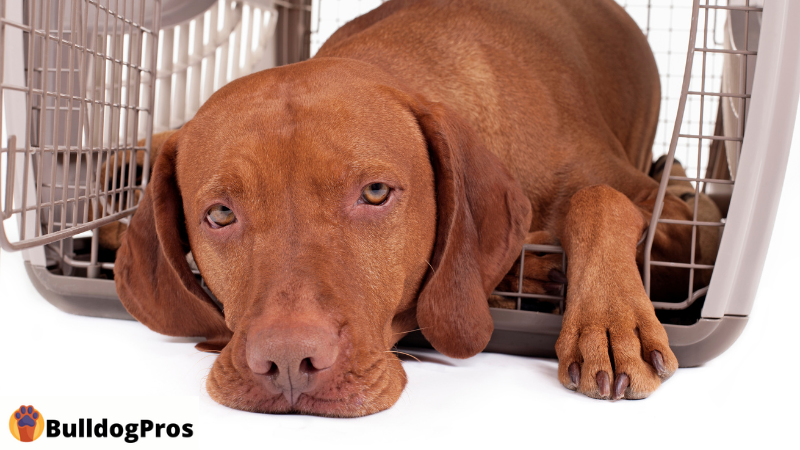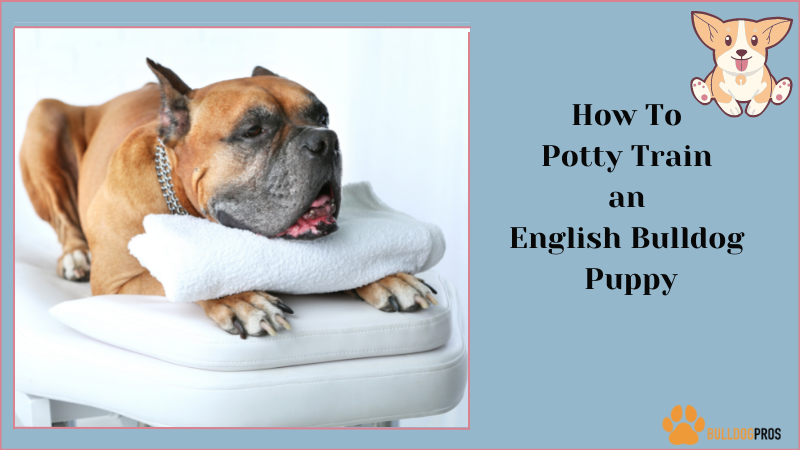Do you have a new furry addition to your family and want to know how best to care for him or her? Do you need a dog crate? Absolutely! Crate training is the best way to keep your dog safe and secure. This blog post, How To Choose a Dog Crate explores the different types of crates available and how to choose the one that’s perfect for your pet, and a size chart is included.
From plastic crates to metal ones, we’ll teach you everything you need to know to make the best decision for your dog.
What Is A Dog Crate?
A dog crate is a sturdy container used to contain a dog. They can be used in the home or while traveling. When properly constructed, crates offer an aesthetically pleasing, safe place for your pet to sleep and relax.
A dog kennel is not the same as a crate. A kennel is usually outdoors and has enough room for your pet to exercise and play in. A crate is smaller than a kennel and is used to keep the dog confined, usually indoors.
Why Crate Training is Important
Dogs are den animals, and as such, they love to be enclosed in their own space. Crate training is a great way to provide your dog with this important need while ensuring their safety and comfort.
There are many benefits of crate training your dog. Crating your pet will help establish good behavior and prevent unwanted behaviors. It can also help to teach your dog basic obedience skills and protect them from potential harm.
It also provides a safe, secure place for your dog while you are away, making it easier to train them and avoid accidents.
When To Start Crate Training
It’s best to start crate training as early as possible, so your pup gets used to it from an early age. I started using crates for my dogs about 20 years ago. Before then, I had trouble with potty training my pups. Incredibly crate training made it so simple.
Before crates entered my and my dog’s lifes, I thought that crating a dog was mean but what I found is my dogs love their crates. They will even go in them on their own during the day to nap. There hasn’t been a dog I’ve owned that doesn’t love their crate.
What To Look For In A Crate
- Comfort
- The crate should be comfortable – Put in a dog pillow/bed/pad, so they have a comfortable place to lie down.
- Durability
- Make sure the crate is sturdy and can withstand regular use.
- Ease of Cleaning
- It’s also important to keep the crate clean – clean it regularly so that any soiled items don’t build up over time.
- Ease of Transportation
- If you’ll be traveling with the crate, it’s important to consider how much space it takes up and whether or not it folds up for easy storage.
- When transporting your dog in a car, choose an appropriately-sized crate that’s also secure from moving around during travel.
For more information about traveling with dogs, see: The Ultimate Guide To Traveling With Dogs
- Safety
- The most important need is safety. Make sure there is nothing that will pinch your pup or puts your dog in danger of getting caught on something and possibly choking.
- Also, be sure it is secure, so he is not able to escape.
- Size
- Make sure to choose a crate with enough space for your dog to move around, comfortably stand up, and lie down.
- Type
- The type of crate you purchase largely depends on your preference. There are crates that look like they are part of your furniture, ones made of wire, etc. See below for a more detailed description of the types of crates available.
- Ventilation
- Ensure the crate has enough ventilation so your dog doesn’t get too hot.
Types Of Crates
Many types and sizes of crates are available on the market, so finding the right one for your pup is easy.
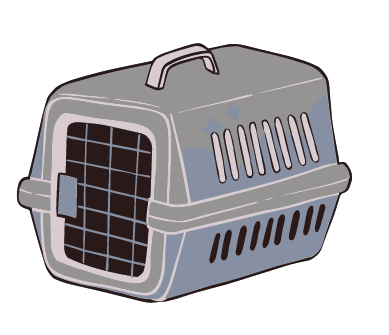
Plastic
Plastic crates are the type that you see that are enclosed and have hard sides and usually 1 door.
They are more durable than wire or soft-sided crates and provide a better job at insulating from the cold.
However, a plastic crate doesn’t have as much ventilation as a wire crate and is not as easy to transport.
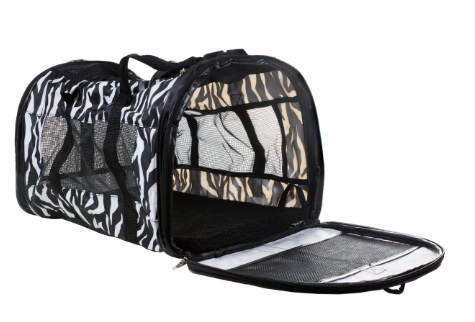
Soft-Sided
Soft-sided crates are made of material and can be used for travel. They are lightweight and easy to transport.
A downside to a soft-sided crate is they are easier to rip, and they are not as durable as other crates.
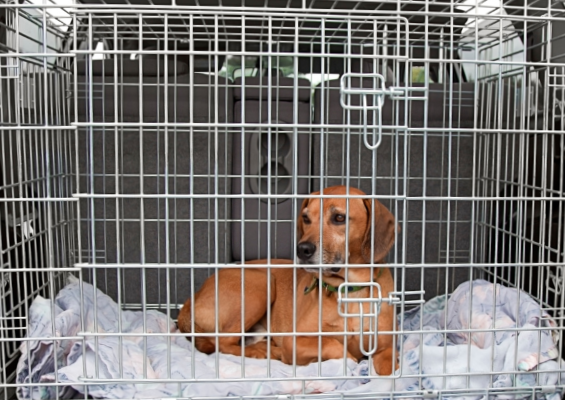
Wire
Wire crates are made of metal. They provide good ventilation that will help keep your dog cool; on the other hand, they don’t provide much warmth from colder weather.
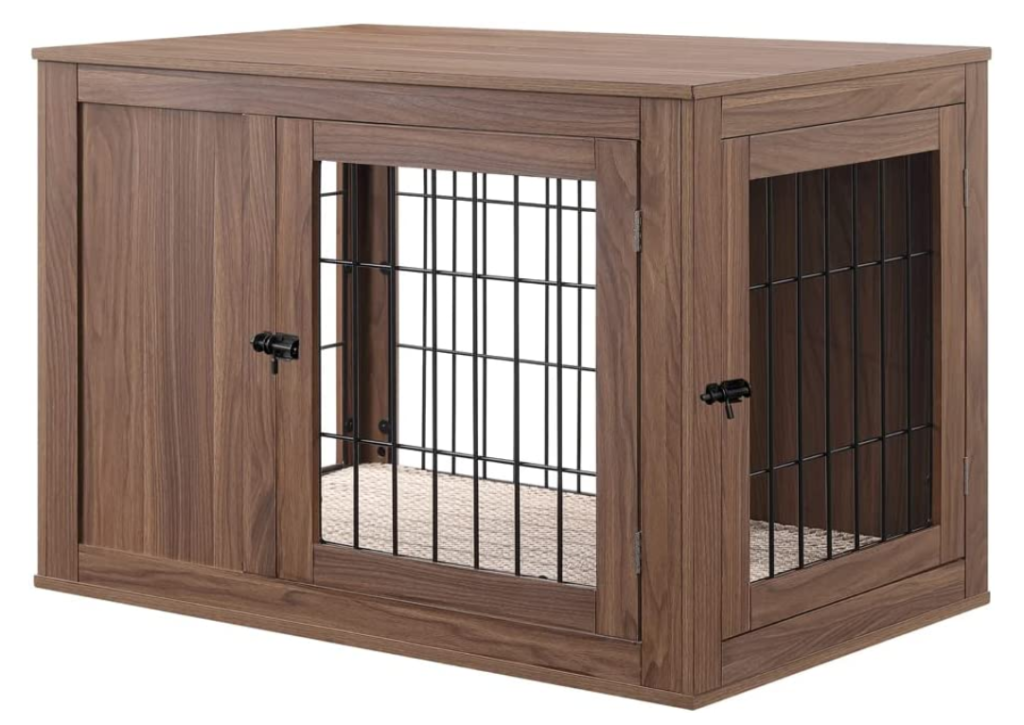
Wooden
A wooden crate takes on more of an appearance of furniture and will fit in with the decor of many homes.
The downside to this type of crate is if you want to use it for travel, it’s not very transportable.
Crate Size
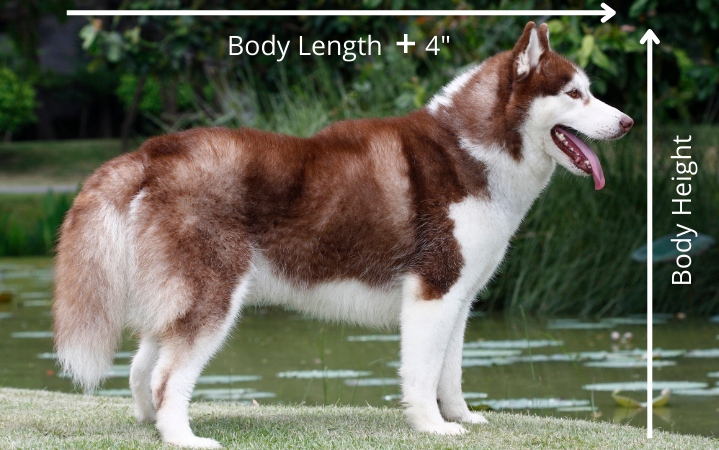
There are different size dog crates available that will fit most any dog breed comfortably – big and small ones included!
Make sure to account for their height, weight, and breed when selecting the right crate.
Start by measuring your dog’s length – nose to tail. Many manufacturers suggest adding 4 inches to this measurement to ensure your dog has enough room to be comfortable.
Next measure your dog’s height. Measure from the ground to the top of his head.
With these measurements, it’s time to choose the perfect dog crate for your pet!
Your dog’s crate should be large enough for your dog to move around, stand up and lie down comfortably.
The width of the crate should be just wide enough for your dog to stand up and turn around in, but no wider. This will help prevent them from using it as a bathroom.
Always use the manufacturer’s guidelines when measuring a crate size.
Dog Crate Size Chart
Below is a dog crate size chart to help you choose the right size crate for your pup.
Do take into consideration that these are general sizes, and your dog may fit in a different size category. Always be sure to measure your dog before purchasing a crate.
| Size | Dog Weight | Breeds Include (As Reported by the AKC) | Crate Dimensions |
| Extra Small | 1 – 10 lbs | Affenpinscher, Bolognese, Brussels Griffon, Chihuahua, Chin, Chinese Crested, Maltese, Papillon, Pomeranian, Shih Tzu, Silky Terrier, Toy Fox Terrier, Toy Poodle, Yorkshire Terrier | 18″ – 22″ |
| Small | 11-25 lbs | American Eskimo, Basenji, Beagle, Bichon Frise, Border Terrier, Boston Terrier, Cairn Terrier, Cavalier King Charles, Cocker Spaniel, Dachshund, French Bulldog, Havanese, Italian Greyhound, Lhaso Apso, Miniature Schnauzer, Pekingese, Miniature Poodle, Pug, Rat and Russell Terrier, Scottish Terrier, Shetland Sheepdog, Shiba Inu, Shih Tzu, West Highland Terrier, Wire Fox Terrier | 24″ |
| Medium | 26-40 lbs | Airedale Terrier, Coonhound, American Foxhound, American Staffordshire Terrier, Australian Cattle Dog, Australian Shepherd, Basset Hound, Bearded Collie, Border Collie, Bull Terrier, English Bulldog, Chinese Shar-Pei, Chow Chow, Collie, Dalmatian, Cocker Spaniel, English Setter, Standard Poodle, Samoyed, Siberian Husky, Schnauzer, Whippet | 30″ |
| Large | 41-70 lbs | Afghan, Alaskan Malamute, American Bulldog, Coonhound, Bloodhound, Boxer, Briard, Chesapeake Bay Retriever, Doberman Pinscher, German Shepherd, Giant Schnauzer, Golden Retriever, Greyhound, Irish Setter, Labrador Retriever, Old English Sheepdog, Rhodesian Ridgeback, Rottweiler, Weimaraner | 42″ |
| Extra Large | 71-90 lbs | Akita, Bernese Mountain Dog, Bullmastiff, Great Dane, Great Pyrenees, Irish Wolfhound, Saint Bernard, Swiss Mountain Dog | 48″ |
| Extra Extra Large | 91 lbs and Up | Anatolian Shepherd, Boerboel, Great Dane, Leonberger, Mastiff, Newfoundland, St. Bernard, Tosa | 54″ |
Video: Dog Crate Size
How To Begin Crate Training Your Dog
By placing the crate near their favorite spot, providing food and water inside it, and rewarding good behavior with positive reinforcement (such as toys), you can successfully crate train your dog from a young age.
Consistency is key – ensure you keep rules consistent across different situations and don’t allow disobedience to become habitual. Your dog will look forward to having his own special area with regular practice.
Dog Crate FAQs
How Long Should a Dog be in a Crate?
It is preferable, to begin with shorter intervals of time (an hour or two) before gradually expanding the time based on your dog’s age and obedience level.
For long-term crate confinement, be sure to consult with your veterinarian first since there are potential health risks associated with prolonged crate confinement.

If you have more than one dog, it’s best to purchase multiple crates, so each one is sized appropriately for its specific size and breed.
An alternative would be to buy a larger crate and insert a divider to give each dog its own space.
What is a dog crate divider?
Some crates are sold with a divider. This allows the crate to be separated into two compartments. You can restrict your puppy to a limited area of the crate while enlarging it as he or she grows with the divider. This is perfect if you are crate-training a growing puppy.
You Might Be Interested in Reading: The Fluffy French Bulldog
You May Also Be Interested in Reading: Best English Bulldog Beds.
Popular Posts
You May Be Interested In: Calming Dog Beds
Conclusion
Crate training is an integral part of dog training, allowing your dog to learn proper socialization and behavioral norms. By choosing the right crate size, whether you have a large dog or small, you can help to ensure that they are safe and comfortable while you are away.
When choosing the right crate for your dog, no one crate is a perfect match for every pet. However, by following the tips we mentioned above and reading reviews from people who have used various types of crates, you will be able to make a good decision about the best dog crate for your pooch.
Now it’s your turn. Have you used a crate, and if so, do you have any tips? Comment below.
